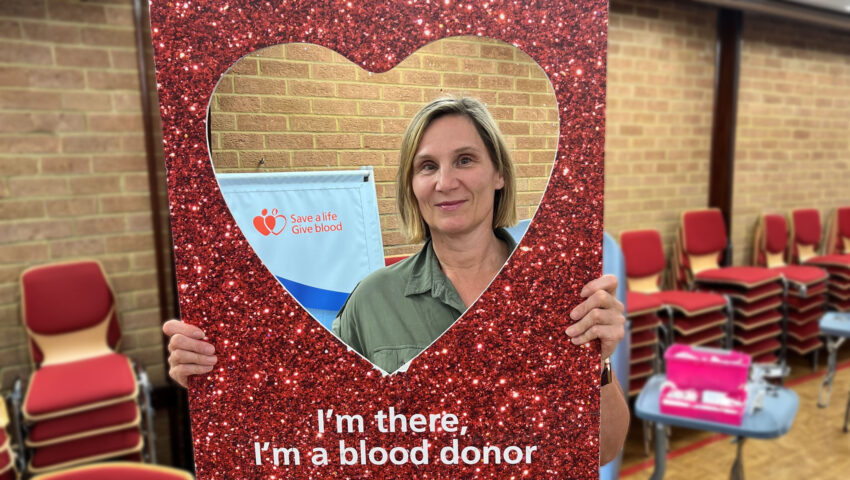Blogs
Every blood donation counts

With 19 donation credits under my belt, I am only six blood donations away from receiving my silver donor card, badge, and certificate. This milestone is something I eagerly look forward to achieving
The urgent need for blood
A few days before my last donation, I received a text message reminding me of the urgent need for donations and expressing their anticipation for my appointment. On the day of the donation, another message arrived, reminding me to eat and drink plenty before my appointment.
Arriving at the donation site
I arrived at the church, located five miles from my house. The place was bustling with activity: people waiting to be seen, others donating hooked up to machines, and some chatting at the snack station. One of the donor carers greeted me warmly and thanked me for coming to donate.
Health check and preparation
I completed the health check questionnaire, which included questions about recent travel, illnesses, or upcoming operations. After that, I was handed a big cup of water to drink and asked to wait for the senior nurse.
The finger prick test
In a private area, the senior nurse asked me to confirm my name and date of birth and whether I had read the information about blood donation. Then came the finger prick test to check my iron levels. This is always an anxious moment for me, as I have failed this test in the past due to low iron levels. Fortunately, my drop floated back to the top of the solution, indicating that I had enough iron to donate.
The donation process
Next, I was taken to a seat where the donor carer checked my personal details again and prepared the packs for my newly donated blood. After choosing my left arm for the donation (since I’m right-handed), the needle went in smoothly and painlessly. Despite the smooth process, I always look away during this part. The initial collection involved filling three small vials before moving on to the main donation.
Encouraging blood flow
I was encouraged to perform exercises such as clenching and releasing my fist, squeezing and releasing my bottom, and gently waving my legs. These exercises help keep the blood flowing. The donor chairs are now tipped back rather than lying flat, which is more comfortable. When the alarm indicated that my blood flow had slowed, I did more exercises to speed it up.
Completing the donation
The entire process took around 10 minutes. Afterward, the donor carer removed the needle and taped a sponge over the tiny hole in my arm. I was thanked again for my donation and then joined the other donors for a free drink and a snack.
Reflecting on the experience
In total, the donation process took just one hour of my day, but it left me with a sense of fulfillment knowing I made a difference. Although few people donate blood, I find it to be a very worthwhile experience.
Planning the next donation
It will be another 16 weeks before I can donate blood again, as opposed to 12 weeks for men. I made my next appointment online through the Give Blood app, and this time it will be at a local secondary school.
Receiving an update on my donation
A week or so later, I received another text message telling me where my donation had gone. My plasma donation was issued to Birmingham Women’s Hospital. As someone with A rhesus negative blood, a type only 8% of the population share, I am considering becoming a platelet donor as well. A negative platelets are especially valuable because they can be given to people of all blood groups. Making them the ‘universal platelet type.’
Be Bold, Donate Blood: Blood Donors Are Life Savers
An average adult has 10 pints of blood in their body. During a donation, we part with just 1 pint. Within 48 hours, the blood volume is replaced, and all red blood cells are completely replenished within 4 to 8 weeks. Most people aged between 17 and 65, weighing between 50 and 158 kg, and meeting donor eligibility criteria can give blood.
Becoming a blood donor is a simple yet profoundly impactful way to save lives. If you’re fit and well, consider making a difference by donating blood.




